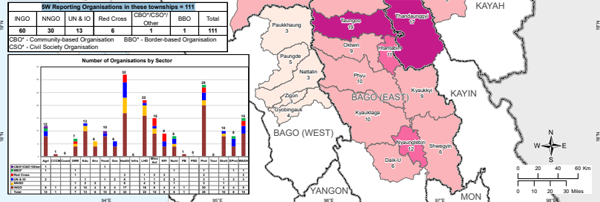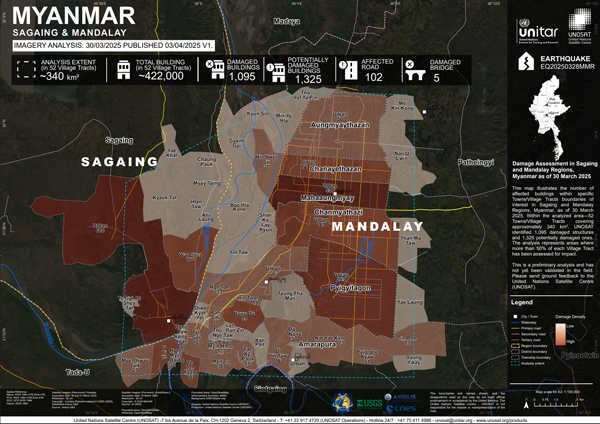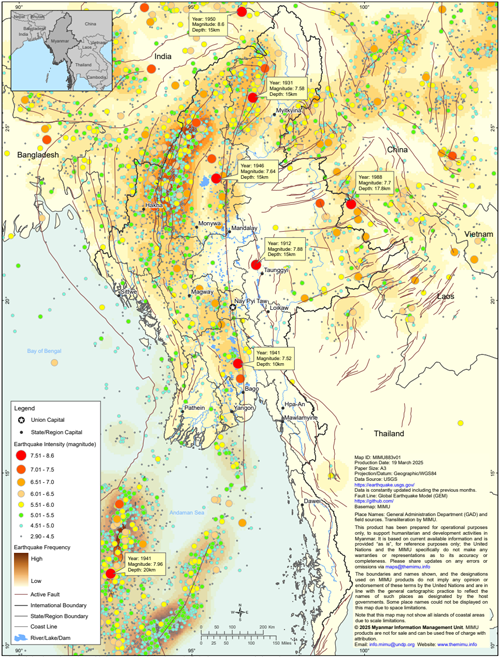Timely logistics information is important during disasters, and to meet this critical need, the Logistics Cluster has released an interactive map focused on the latest situation in Myanmar.
This will provide updates on:
- Situation Monitoring: Offering current updates on emergency situations, including floods, cyclone paths, earthquakes, and damage assessments.
- Physical Access Constraints: Providing details on the condition of roads, rivers, and bridges impacted by damage, flooding, or landslides.
- Waste Management & Recycling: Presenting an overview of waste management facilities, recycling capabilities, and best practices, mapped by the WREC project.
Read the latest situation report from Logistics Cluster.








